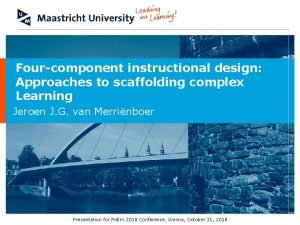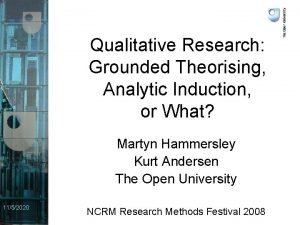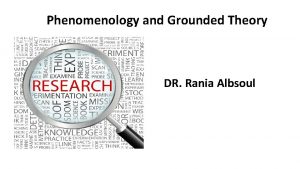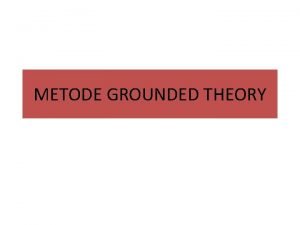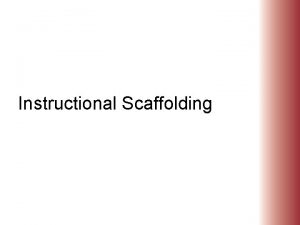Asiaspecific Scaffolding Needs in Grounded Design eLearning empirical











- Slides: 11

Asia-specific Scaffolding Needs in Grounded Design e-Learning : empirical comparisons among several institutions Paul KAWACHI Open Education Network kawachi@open-ed. net

The Use of e-Learning Technologies was surveyed in 15 Regions across Asia O O O O OO O

Uses of e-Learning Technologies synchronous or asynchronous cooperative or collaborative with or without Structure Dialogue Structure and Dialogue as defined by Moore ‘s (1993) Theory of Transactional Distance In D Keegan (Ed. ), Theoretical Principles of Distance Education (pp. 22 -38). London : Routledge.

The Theory of Transactional Distance less (1) S- DAdded Transactional (2) S+ Distance (3) S+ Structure (4) S- Added DD+ Dialogue D+

Four-Stage Course for Learning Critical Thinking Skills STAGE CHARACTERISTICS 1 : Self-introduction, share prior experience and knowledge, brainstorming 2 : Theorize, develop metaphor, creative and lateral thinking 3 : Guided exploration of alternative theories, hypotheses testing, vertical thinking 4 : Test out a new way, experiential, widen repertoire, make public or practical theory chosen from Stage 3

Group Learning Mode, and Media Choice Stage 4 Cooperative Synchronous Stage 3 Collaborative Asynchronous Stage 1 Cooperative Synchronous Stage 2 Collaborative Asynchronous

In Asia, institutions, teachers, the students, and the employers have all asserted that they would like less theory and less Structure, and instead more Dialogue - to make the learning more fitting to their purpose in practice, this means moving Stage 1 » » » Stage 4 and omitting Stage 2 and Stage 3 which focus on theory, questioning the text / teacher, and alternatives.

It is well known that students find the asynchronous collaborative learning in a group difficult to navigate. Some scaffolding support can be introduced. This should be Added Structure.

The Added Structure for Stage 2 and Stage 3 By the course / institution By the online tutor Setting a collaborative task such as students designing a multimedia learning unit Purposively initiating the intrinsic motivations to learn in each student

In conclusion, the uses of e-learning technologies in Open and Distance Education in Asia are different from those in the West

Thank you for further details, please email : kawachi@open-ed. net
 Axial coding
Axial coding Ask fhml
Ask fhml Primary needs and secondary needs
Primary needs and secondary needs Primary needs and secondary needs
Primary needs and secondary needs Simple claustral complex
Simple claustral complex Strategic gender needs and practical gender needs
Strategic gender needs and practical gender needs Need analysis definition
Need analysis definition Corner grounded delta
Corner grounded delta Benefits of grounded theory
Benefits of grounded theory What is grounded theory in simple terms
What is grounded theory in simple terms What is analytic induction in qualitative research
What is analytic induction in qualitative research Transcendental phenomenology
Transcendental phenomenology

